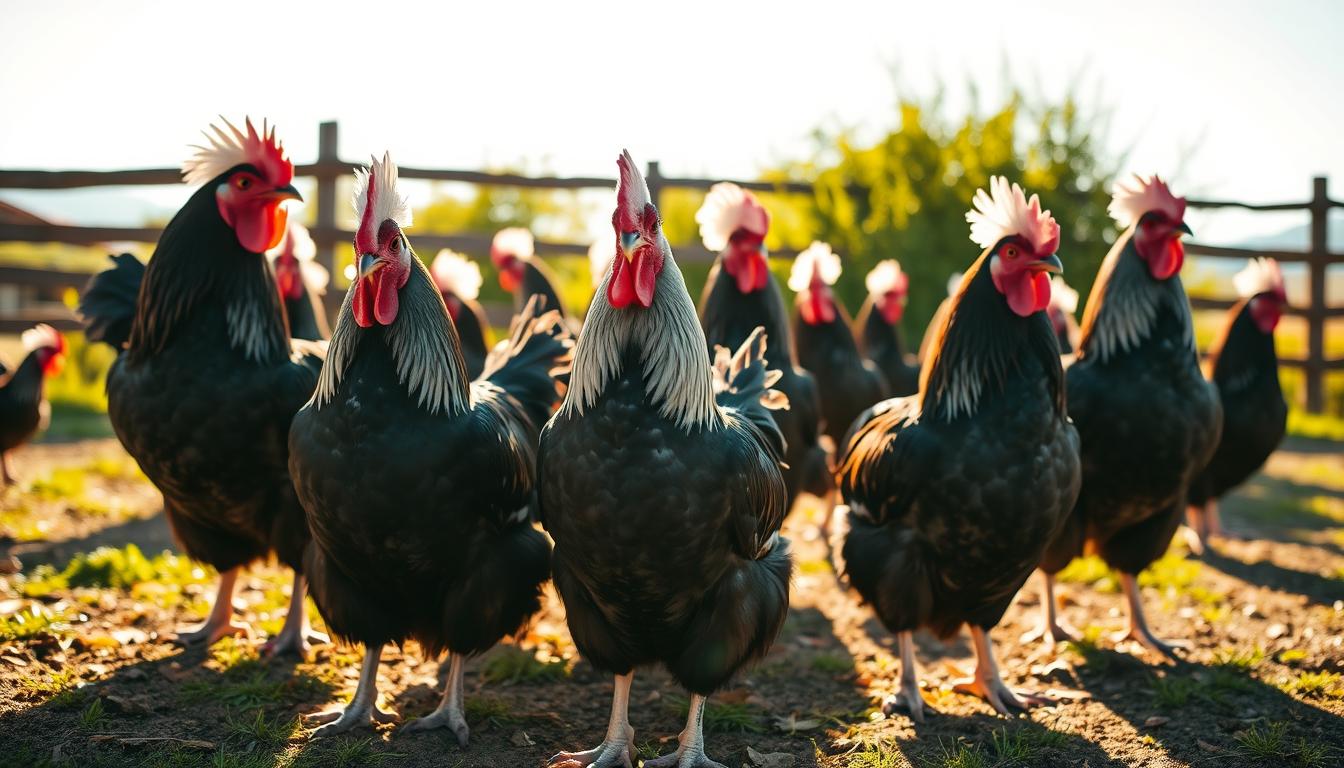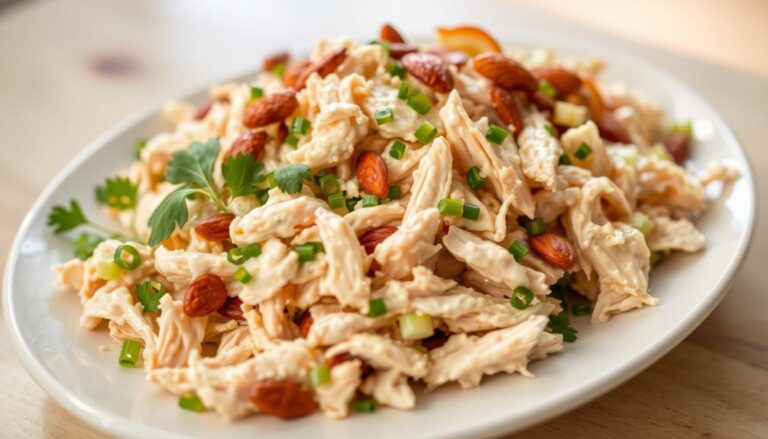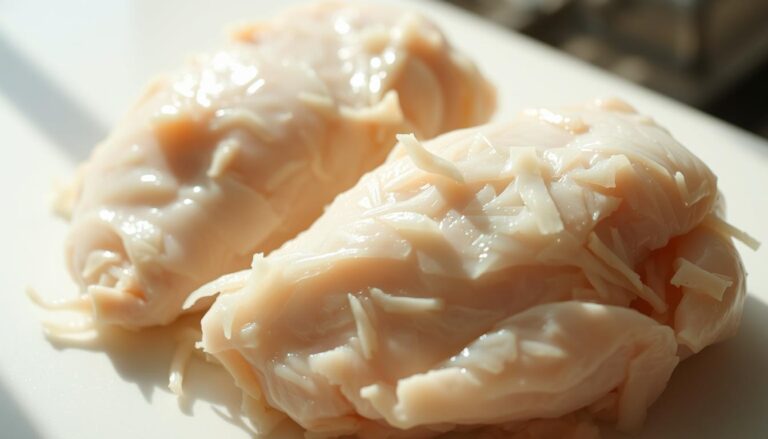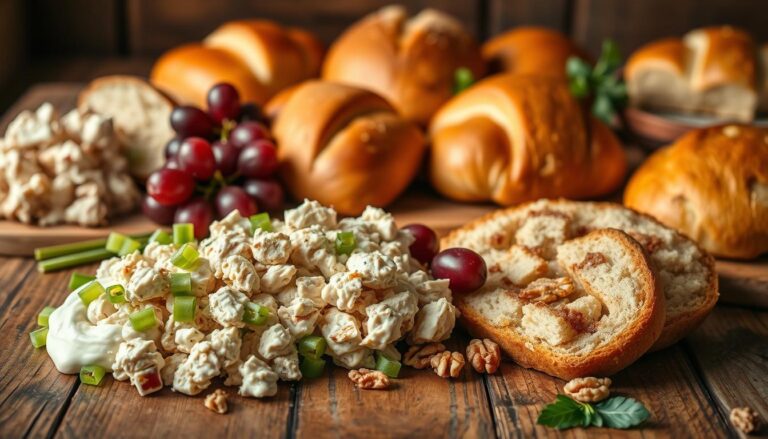Learn About White Crested Blue Polish Chicken Characteristics
Table of Contents
Learn About White Crested Blue Polish Chicken Characteristics
If you’re looking for a unique and eye-catching addition to your backyard flock, this breed offers both beauty and personality. Recognized by the American Poultry Association in 1963, these chickens stand out with their distinctive appearance and friendly nature.
Developed over 50 years by Cackle Hatchery®, this variety combines ornamental appeal with practical backyard suitability. They’re classified in the Continental Show Class, making them popular among poultry enthusiasts who appreciate both form and function.
What makes these birds special is their medium size (4.5-6 lbs) and adaptable temperament. They fit well in mixed flocks while adding visual interest with their signature head feathers. The “blue” coloration produces striking splash and black variations through unique genetics.
With a recovering status on The Livestock Conservancy’s heritage list, these birds represent an important piece of poultry history. Their 4.75/5 customer rating speaks to their popularity among both novice and experienced keepers.
Key Takeaways
- Recognized by APA standards since 1963
- Considered a recovering heritage breed
- 50+ years of specialized breeding by Cackle Hatchery®
- Show-class birds that also thrive in backyard settings
- Medium size makes them ideal for mixed flocks
- Genetic color variations create unique appearances
- Highly rated by poultry enthusiasts nationwide
White Crested Blue Polish: A Unique Ornamental Breed
Standing out in poultry shows and backyards alike, this breed combines elegance with heritage. Their distinctive traits make them a favorite for both exhibition and casual keeping.
Origin and History
Developed in Europe centuries ago, these birds were refined for their ornamental appeal. They gained popularity in the U.S. after being recognized by the APA in 1963.
Selective breeding emphasized their signature crests and color variations. Today, they’re prized for their historical significance and visual charm.
Breed Recognition and Standards
The APA sets strict guidelines for show-quality birds. Key criteria include weight, comb shape, and feather structure.
| Feature | Requirement |
|---|---|
| Weight (Hens) | 4.5 lbs |
| Weight (Roosters) | 6 lbs |
| Comb Type | V-shaped |
| Beak Color | Not yellow (disqualification) |
Classified in the Continental Show Class, they must exhibit balanced proportions and clean leg feathering. The TLC lists them as “Recovering,” highlighting their conservation value.
Distinctive Appearance of White Crested Blue Polish Chickens
One glance at their features reveals why they’re a favorite among poultry lovers. Their elegant crests and rare color patterns make them a standout choice for both shows and backyards.
Crest Feathers and Head Structure
The fluffy crest is their most recognizable trait. It frames their face like a natural crown, requiring occasional trimming for clear vision.
Beneath the crest, a V-shaped comb and dark eyes give them a refined look. Hens often have fuller crests than roosters, adding to their charm.
Color Variations and Size
The blue polish gene doesn’t breed true. When two blue parents mate, their chicks may be black, splash, or blue—creating a rainbow effect in your flock.
| Parent Colors | Offspring Colors (Expected Ratios) |
|---|---|
| Blue × Blue | 25% Black, 50% Blue, 25% Splash |
| Blue × Black | 50% Blue, 50% Black |
| Splash × Splash | 100% Splash |
For size, standard birds weigh 4.5–6 lbs—lighter than Leghorns but sturdier than bantams. Their compact build suits urban coops while still offering ornamental appeal.
Temperament and Behavior
Balancing personality traits makes these birds both charming and manageable. They blend docility with occasional skittishness, requiring attentive care to thrive. Their social nature shines in well-structured flocks.
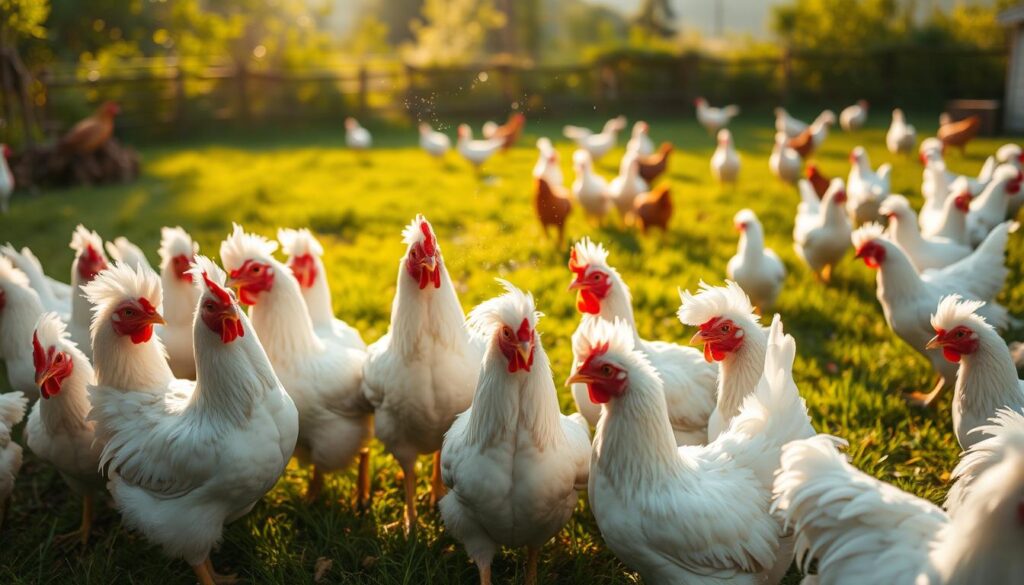
Docile Yet Flighty Nature
These chickens are friendly but easily startled. Loud noises or sudden movements may send them darting for cover. Regular handling helps build trust over time.
Their crests can limit vision, adding to their cautious demeanor. Trim feathers near their eyes for better awareness. Despite this, they rarely show aggression.
Social Dynamics in a Flock
Maintaining a peaceful *pecking order* is easier with an 8:1 hen-to-rooster ratio. Overcrowding disrupts harmony—allow 4 sq. ft per bird in coops. Visual barriers like low perches reduce squabbles.
They adapt well to mixed flocks, including bantams. Introduce new birds gradually to avoid stress. Docile breeds like Orpingtons make ideal companions.
- Flock integration: Introduce newcomers at night to ease tension.
- Space: Expand runs to prevent territorial disputes.
- Fertility: Proper ratios ensure consistent egg viability.
Egg Production and Utility
When considering egg-laying capabilities, this breed offers moderate production with unique characteristics. Their small-to-medium white eggs average 180 per year, peaking in spring and summer. While not prolific layers, their ornamental value compensates for lower yields.
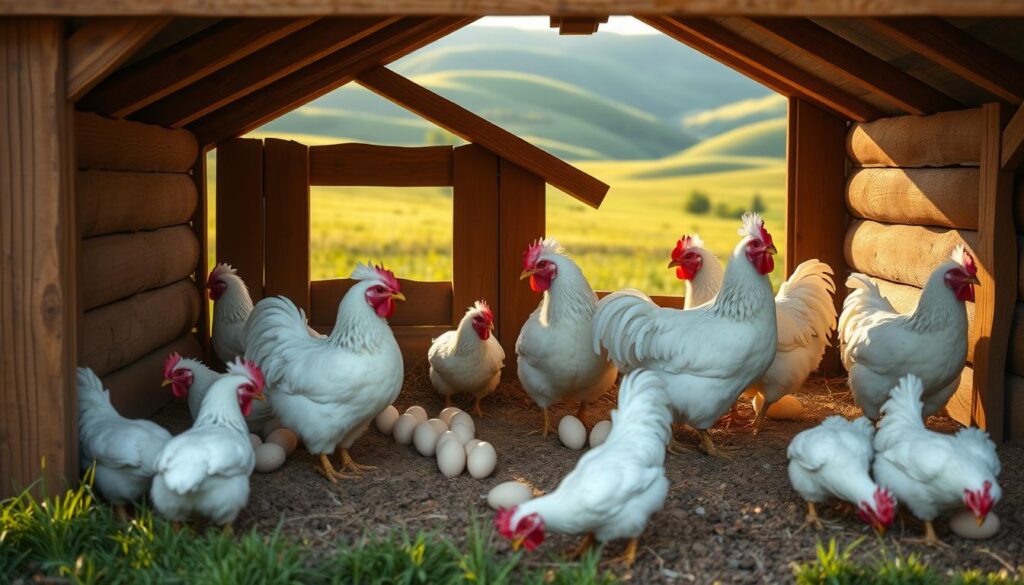
Egg Size, Color, and Laying Frequency
Expect eggs weighing 1.5–2 oz, slightly smaller than commercial breeds. The shells are consistently white, lacking the pigment found in brown-egg varieties. Hens begin laying at 5–6 months, with production slowing in winter.
“Supplemental lighting (14 hours/day) can sustain winter laying, but rest periods promote long-term health.”
Broodiness and Fertility Rates
Less than 5% exhibit broodiness, making artificial incubation essential for hatching. Natural mothers are rare; most abandon nests after a few days.
| Factor | Requirement |
|---|---|
| Incubation Temperature | 99.5°F (37.5°C) |
| Humidity | 55–60% |
| Fertility Rate (Optimal) | 55% |
To maximize fertility, maintain a 1:8 rooster-to-hen ratio. Overcrowding reduces mating success. Chicks hatch at 80–85% viability with proper incubation.
- Vaccination: Protect chicks against Marek’s disease at day 1.
- Brooder Setup: 95°F initially, decreasing 5°F weekly.
- Feed: High-protein starter crumbles (20%) for 6 weeks.
Caring for Your White Crested Blue Polish Chickens
Proper care ensures your chickens thrive while maintaining their signature look. Their unique features require tailored solutions, from coop design to daily upkeep.
Special Needs for Crest Maintenance
The fluffy crest demands regular attention. Check crests every week for debris or mites. Trim overgrown feathers to prevent vision obstruction.
Use rounded scissors for safe trimming. Avoid cutting too close to the skin. A damp cloth helps clean dirt without stressing the bird.
Roosting and Space Requirements
These birds prefer elevated roosts 2–4 feet high. Use flat bars (2–3 inches wide) for secure footing. Space perches 12 inches apart to reduce crowding.
| Space Type | Requirement |
|---|---|
| Indoor Coop | 4 sq. ft per bird |
| Run Area | 10 sq. ft per bird |
| Roost Bar | 2–4 ft long, 2″ thick |
Covered runs protect against rain and predators. Arrange feeders in an orderly manner to avoid competition. Add visual barriers for timid birds.
- Seasonal Adjustments: Insulate coops in winter; add shade in summer.
- Predator-Proofing: Bury hardware cloth 12 inches deep around runs.
- Shipping: New birds acclimate best when delivered mid-week.
Conclusion: Why Add White Crested Blue Polish to Your Flock?
Adding these birds to your flock brings elegance and charm. Their fluffy crests and rare color patterns make them instant favorites. You’ll enjoy their friendly nature and conversation-starting appeal.
Though not prolific layers, their ornamental value shines. Current orders ship February–August, with a 3-chick minimum. At $5.99 each (limit 25), they’re an affordable way to enhance your coop.
Vaccination options ensure healthy arrivals. Rated 4.75/5 by poultry keepers, these birds deliver satisfaction. Order now to secure your seasonal chicks!
FAQ
What makes White Crested Blue Polish chickens unique?
Are these birds good layers?
How do you maintain their crest feathers?
Do they get along with other breeds?
What size coop do they need?
Are bantam versions available?
For more cooking tips, stay connected with us. We also recommend the cookbook Skinnytaste Simple: Easy, Healthy Recipes with 7 Ingredients or Fewer
For more Recipes about Chicken

